
Consumer Insights
Uncover trends and behaviors shaping consumer choices today
Procurement Insights
Optimize your sourcing strategy with key market data
Industry Stats
Stay ahead with the latest trends and market analysis.
The Expert Market Research report, titled “Event Monitor Manufacturing Plant Project Report 2026 Edition: Industry Trends, Capital Investment, Price Trends, Manufacturing Process, Raw Materials Requirement, Plant Setup, Operating Cost, and Revenue Statistics” includes various aspects that are critical for establishing an event monitor plant. These include infrastructure requirements, transportation requirements, utility specifications, and financial and economic analysis, among others.
Some of the major trends in the event monitor market are rising elderly population and the growing need for effective health monitoring solutions. As of 2024, approximately 10.3% of the global population is aged 65 and over, with projections indicating that by 2074, this figure will reach 20.7%. In England alone, over 10 million people are currently aged 65 and older, representing 18% of the population, and this number is expected to rise significantly in the coming decades, particularly among those aged 80 and above, which is the fastest-growing segment of the population. The implications of this trend necessitate more robust monitoring solutions to manage chronic health issues effectively, as older adults are at a higher risk for cardiovascular diseases.
Government initiatives and investments in healthcare infrastructure are also critical in supporting the adoption of advanced diagnostic tools like event monitors. For example, many countries are implementing policies aimed at enhancing healthcare access for the elderly. In the UK, the government has launched initiatives such as the Ageing Well Programme, which focuses on promoting healthy ageing through improved healthcare services and community support systems. Additionally, funding for technology integration in healthcare settings has increased, allowing for better monitoring and management of chronic conditions among older adults. In the United States, Medicare has expanded coverage for remote patient monitoring services, reflecting a growing recognition of the importance of continuous health monitoring as part of chronic disease management. Moreover, the increasing prevalence of sedentary lifestyles among 25% of the adults further underscores the need for effective monitoring solutions.
Other elements to consider while establishing an event monitor plant include raw material sourcing, workforce planning, and packaging. The production of event monitors relies on electronic components like sensors, semiconductors, and batteries, which are often sourced from regions like Asia-Pacific, including countries such as China, Japan, and South Korea, known for their advanced electronics manufacturing capabilities. Manufacturers can leverage this information by establishing strong supplier relationships in these regions to ensure a steady supply chain, negotiating bulk procurement deals to reduce costs, and exploring partnerships with component manufacturers for access to cutting-edge materials. Additionally, diversifying sourcing strategies across multiple suppliers can mitigate risks related to supply chain disruptions and ensure consistent production capabilities.
Moreover, to help stakeholders determine the economics of an event monitor plant, project funding, capital investments, and operating expenses are analyzed. Projections for income and expenditure, along with a detailed breakdown of fixed and variable costs, direct and indirect expenses, and profit and loss analysis, enable stakeholders to comprehend the financial health and sustainability of a business. These projections serve as a strategic tool for evaluating future profitability, assessing cash flow needs, and identifying potential financial risks.
An event monitor is a portable device used primarily in cardiology to record the heart's electrical activity during specific symptoms. Unlike Holter monitors, which record continuously, event monitors activate upon user input or automatically when an abnormal rhythm is detected. They help diagnose irregular heartbeats by capturing data before, during, and after symptoms, providing crucial information for healthcare providers. Event monitors were initially used in hospitals; however, these monitors became accessible for home use in the late 20th century. Today, they play a vital role in remote patient monitoring and cardiac health management.
An event monitor is a portable device, typically about the size of a pager (approximately 10 cm x 5 cm), designed to record the heart's electrical activity (ECG) during symptomatic episodes. Its lightweight and compact design, usually weighing around 100 grams, ensures easy portability for patients. The device uses electrodes attached to the skin with hypoallergenic adhesive patches, which reduces the risk of skin irritation. Most event monitors are battery-operated, with a battery life of about 2 to 4 weeks, allowing for extended use without frequent recharging.
The production process of an event monitor begins with market research to identify customer needs and trends. Next, design specifications are developed, detailing dimensions (approximately 10 cm x 5 cm), weight (around 100 grams), and functionality, including battery life (2 to 4 weeks). Following this, component sourcing is conducted to procure essential electronic parts, including electrodes and microprocessors. Each material undergoes inspection to ensure compliance with quality standards. Then the components are meticulously put together. After assembly, quality control testing is performed to verify the device’s functionality and accuracy. Once passed, the monitors are carefully packaged to prevent damage during transport.

Read more about this report - REQUEST FREE SAMPLE COPY IN PDF
Event monitor devices are primarily used for the detection and management of arrhythmias, such as atrial fibrillation (AF), which is projected to affect 19.6% of individuals over 65 by 2030, potentially doubling by 2050, according to the National Center for Biotechnology Information. Moreover, the World Health Organisation (WHO) reports that cardiovascular diseases account for approximately 32% of global deaths, which highlights the urgent need for event monitors. Notably, during the pandemic, 16.7% of hospitalised patients experienced arrhythmias, further escalating demand for mobile monitoring devices.
Additionally, advancements in technology, such as artificial intelligence integration in event monitors, are enhancing diagnostic capabilities. For instance, GE Healthcare's Portrait Mobile system enables continuous patient monitoring, improving early detection of complications. Government initiatives promoting telehealth and remote patient monitoring also bolster market growth, with North America holding a significant share due to favourable regulatory frameworks and investments in healthcare technology.
A detailed overview of production cost analysis that evaluates the manufacturing process of event monitor is crucial for stakeholders considering entry into this sector. Furthermore, stakeholders can make informed decisions based on the latest economic data, technological innovations, production process, requirements of raw materials, utility and operating costs, capital investments by major players, pricing strategies, and profit margins. For instance, the growing demand for event monitors, driven by technological advancements, presents significant opportunities for manufacturers in this market. With the development of innovative devices like symptom event monitors, memory looping monitors, and remote monitoring technologies, manufacturers are positioned to capture a broader consumer base, including patients and healthcare providers seeking efficient and reliable cardiac monitoring solutions.
The integration of advanced features, such as automatic rhythm detection and data transmission to healthcare providers, allows manufacturers to differentiate their products and gain a competitive edge. Furthermore, the demonstrated benefits of remote monitoring in reducing hospitalisation rates and healthcare costs increase the adoption of these devices. This will not only boost revenue streams for manufacturers but also expand their global presence in the medical devices sector.
Below are the sections that further detail the comprehensive scope of the prefeasibility report for an event monitor production plant:
Market Dynamics and Trends: Factors such as rising prevalence of cardiovascular diseases (CVDs) are significantly affecting market conditions in the event monitor sector. According to the World Health Organization (WHO), CVDs account for approximately 32% of all global deaths, translating to nearly 17.9 million fatalities annually. This alarming trend has heightened the urgency for continuous monitoring systems that can detect heart-related issues early. Also, studies indicate that conditions like atrial fibrillation are expected to affect nearly 19.6% of individuals over 65 by 2030, demonstrating the need for devices that can monitor heart health over extended periods. Event monitors are particularly valuable in this context as they allow patients to record their heart’s electrical activity during symptoms, which may not be captured during standard ECG tests. Understanding these demands and trends helps businesses align their production plans in the event monitor market.
Profiling of Key Industry Players: Leading manufacturers like Medtronic, Abbott, and Boston Scientific are included in the event monitor report. Medtronic has recently enhanced its LINQ family of insertable cardiac monitors with advanced AI capabilities, significantly improving arrhythmia detection and patient monitoring accuracy. The new AccuRhythm AI algorithms, which also received FDA approval, have demonstrated an impressive 80% accuracy in predicting healthcare utilisation related to atrial fibrillation (AF) and reduced false alerts by up to 88.2%. This innovation is crucial as the prevalence of AF is projected to affect 12.2 million people in the U.S. by 2030, underscoring the need for effective long-term monitoring solutions. Continuous improvements in AI technology are set to transform cardiac care, enabling more precise diagnoses and better patient outcomes.
Economic Analysis: Capital expenditure (CAPEX) analysis provides stakeholders the knowledge about required investments in advanced technologies, efficient machinery, and necessary infrastructure. Investing in high-capacity mixing equipment, such as a continuous mixer or high-shear mixer, can improve production efficiency by 20-30%. Investing in energy-efficient systems, such as combined heat and power (CHP) systems could reduce energy consumption by up to 30%, as these systems use waste heat from production processes to generate electricity and provide heating.
Fluctuations in event monitor prices are influenced by market demand and supply; for instance, during a health crisis or an increase in cardiovascular diseases, the demand for cardiac monitors may surge, leading to higher prices if supply cannot keep pace. Technological advancements also play a crucial role; as seen with Medtronic's introduction of AI-enhanced features in their LINQ family of monitors, the costs associated with research and development can drive up prices. Brand reputation and quality also affect pricing; established companies like Abbott and Boston Scientific often command higher prices due to their reliability and proven track records. Lastly, the complexity of events being monitored can influence costs. These factors collectively shape the pricing landscape for event monitors in the healthcare industry.
Establishing an event monitor manufacturing facility requires a comprehensive financial investment that encompasses various elements critical to the project's success. The following sections detail these components:
Projected profit margins and effective product pricing strategies improve overall profitability. Manufacturers might target a profit margin of around 20-30%, achieved through strategic pricing based on raw material costs and prevailing market demand. Effective pricing strategies should consider fluctuations in raw material prices and competitive positioning within the market.
The establishment of an event monitor manufacturing facility must comply with various regulatory frameworks. Key regulations include the Good Manufacturing Practice (GMP) guidelines, which require comprehensive environmental monitoring programs to track airborne particles and surface contamination, particularly in aseptic areas. For example, facilities must implement a Contamination Control Strategy (CCS) that defines critical control points and corrective actions when deviations occur. Adherence to the FDA's Predicate Rules, such as 21 CFR Parts 210 and 211, is also essential for maintaining quality during the manufacturing process, including proper documentation and electronic record-keeping to prevent data tampering. These regulations not only ensure compliance but also enhance product quality and patient safety.
This prefeasibility report aims to equip potential investors and existing manufacturers with crucial insights to make informed decisions in the event monitor industry.




*While we strive to always give you current and accurate information, the numbers depicted on the website are indicative and may differ from the actual numbers in the main report. At Expert Market Research, we aim to bring you the latest insights and trends in the market. Using our analyses and forecasts, stakeholders can understand the market dynamics, navigate challenges, and capitalize on opportunities to make data-driven strategic decisions.*
Get in touch with us for a customized solution tailored to your unique requirements and save upto 35%!
Basic Plan
USD 5,699
USD 4,844
Get Startedtax inclusive*
Raw Material and Product Specification, Raw material consumption, Process flow diagram
Machinery Cost, Working Capital
Utilities consumption, Operating cost, Overheads, Financing Charges, GSA , Packaging
Premium Plan
USD 6,799
USD 5,779
Get Startedtax inclusive*
Key Processing Information, Capital Investment Analysis, Conversion Cost Analysis
Raw material consumption and prices, Utilities consumption breakdown, By-Product Credit, Labour Charges Breakdown
Land and Site Cost, Equipment Cost, Auxiliary Equipment Cost, Contingency, Engineering and Consulting Charges
Enterprise Plan
USD 8,899
USD 7,564
Get Startedtax inclusive*
Key Processing Information, Capital Investment Analysis, Conversion Cost Analysis, Variable Cost Breakdown, Investing Cost Breakdown,
Breakdown of machinery cost by equipment, Auxiliary Equipment Cost, Piping, Electrical, Instrumentation
Cost of Construction, Plant Building, Site Development Charges
Land Cost, Development Charges
Dynamic Spreadsheet (Unlocked)
*Please note that the prices mentioned below are starting prices for each bundle type. Kindly contact our team for further details.*

Basic Plan
USD 5,699
USD 4,844
Key Processing Information
Raw Material and Product Specification, Raw Material Consumption, Process Flow Diagram
Capital Investment Analysis
Machinery Cost, Working Capital
Conversion Cost Analysis
Utilities Consumption, Operating Cost, Overheads, Financing Charges, GSA , Packaging

Premium Plan
USD 6,799
USD 5,779
All Contents of Basic Report
Key Processing Information, Capital Investment Analysis, Conversion Cost Analysis
Variable Cost Breakdown
Raw Material Consumption and Prices, Utilities Consumption, Breakdown By-Product Credit, Labour Charges Breakdown
Investing Cost Breakdown
Land and Site Cost, Equipment Cost, Auxiliary Equipment Cost, Contingency, Engineering and Consulting Charges

Enterprise Plan
USD 8,899
USD 7,564
Includes all Report Content
Key Processing Information, Capital Investment Analysis, Conversion Cost Analysis, Variable Cost Breakdown, Investing Cost Breakdown,
Equipment Cost Breakdown
Breakdown of Machinery Cost By Equipment, Auxiliary Equipment Cost, Piping, Electrical, Instrumentation
Land and Construction Cost Details
Land Cost, Development Charges, Cost of Construction, Plant Building, Site Development Charges
Dynamic Excel Cost Model
Dynamic Spreadsheet (Unlocked)
*Please note that the prices mentioned below are starting prices for each bundle type. Kindly contact our team for further details.*
Flash Bundle
Number of Reports: 3
20%
tax inclusive*
Small Business Bundle
Number of Reports: 5
25%
tax inclusive*
Growth Bundle
Number of Reports: 8
30%
tax inclusive*
Enterprise Bundle
Number of Reports: 10
35%
tax inclusive*
How To Order

Select License Type
Choose the right license for your needs and access rights.

Click on ‘Buy Now’
Add the report to your cart with one click and proceed to register.

Select Mode of Payment
Choose a payment option for a secure checkout. You will be redirected accordingly.
Gain insights to stay ahead and seize opportunities.
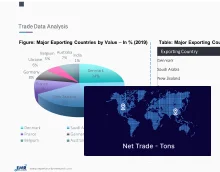
Get insights & trends for a competitive edge.
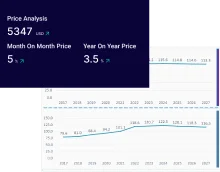
Track prices with detailed trend reports.
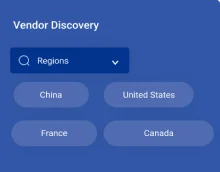
Analyse trade data for supply chain insights.

Leverage cost reports for smart savings
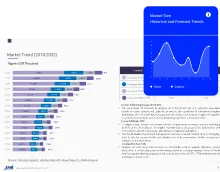
Enhance supply chain with partnerships.
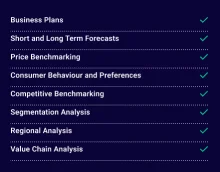
Connect For More Information
Our expert team of analysts will offer full support and resolve any queries regarding the report, before and after the purchase.
Our expert team of analysts will offer full support and resolve any queries regarding the report, before and after the purchase.
We employ meticulous research methods, blending advanced analytics and expert insights to deliver accurate, actionable industry intelligence, staying ahead of competitors.
Our skilled analysts offer unparalleled competitive advantage with detailed insights on current and emerging markets, ensuring your strategic edge.
We offer an in-depth yet simplified presentation of industry insights and analysis to meet your specific requirements effectively.
Share